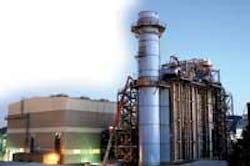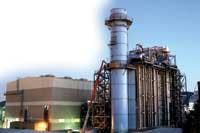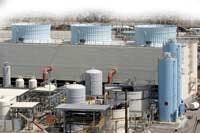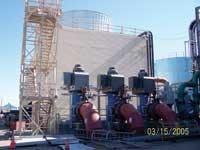Cooling Power Technologies:Finding the Right Mix for Maximum Efficiency
Domestic electric power generation has a close link with freshwater supplies - especially in the West and Southwest, but increasingly elsewhere in the country due to tighter federal water use rules for power plants. Thermoelectric power plants account for about 39% of domestic water use - second only to agriculture. Primarily for cooling purposes, it takes about 25 gallons of water to produce a kilowatt-hour of electricity according to the U.S. Department of Energy National Energy Technology Laboratory (NETL). Prominent cooling technologies featured at thermoelectric power plants include:
• Once-through systems
• Recirculating wet-cool towers
• Indirect dry-cool systems
Over half of coal-fired power plants utilize once-through systems. These cooling units are efficient and entail low capital costs, but they also require large volumes of water. The average once-through system processes 37.7 gallons/kWh, according to NETL.
Recirculating wet cooling towers require less water but they necessitate makeup water pretreatment and higher capi
tal costs. The average recirculating system processes 1.2 gallons/kWh. Combined cycle, cogeneration, waste-to-energy or coal-fired power plants might feature recirculating towers.
For example, the Southern California Public Power Authority built the 310-MW Magnolia Power Project to serve Burbank and surrounding cities. This high efficiency, natural gas-fired, combined-cycle plant began operating in summer 2005 - and features reclaimed wastewater for its cooling water tower evaporation systems. Pipelines carry reclaimed wastewaters from Burbank to the plant and excess wastewaters are evaporated, eliminating potential discharges into the Los Angeles River.
Situated near Farmington, N.M., Public Service of New Mexico’s 1,800-MW coal-fired San Juan Generating Station also features cooling towers. PSNM recently partnered with the Electric Power Research Institute to study using produced waters, a highly saline by-product of regional natural gas and oil extraction, to help satisfy this plant’s considerable water needs. The study involves satisfying 10% of the 20 million gallons/day of required make-up water (typically withdrawn from the San Juan River) by piping produced waters to the station, removing excess total dissolved solids, and deploying the treated water to cooling towers.
Indirect dry-cool systems may be the most progressive cooling technologies for power generation facilities. While they tend to be costly upfront, they consume negligible volumes of water. (Indirect dry-cool systems also can demand significant parasitic applications including pumps and fans and substantial retrofit applications at existing plants.)
For example, the 500-MW Astoria Energy combined cycle power plant in Queens, N.Y., features air-cooled steam condenser dry-cool technology that consumes 90% less water than cooling towers. Provided by SPX Cooling Technologies, this closed cycle heat exchanger condenses steam turbine exhaust under a vacuum. It is designed to replace steam surface condenser and evaporative cooling tower technologies. According to Ralph Wyndrum, Principal Systems Engineer with SPX, this system can be applied to thermoelectric plants sized from 10-MW to 750-MW.
Designing power cooling systems that utilize water more efficiently is a valuable way for the commercial energy industry to show stakeholders - including the U.S. Congress, local commissioners, and customers - how it can help power our world using less volumes of our most precious natural resource. IWW
About the Author: Stuart V. Price, principal with RSVP Communications in Alexandria, Va., has covered the energy, engineering, and environmental fields for 20 years. Contact: [email protected].
Cool Works
Section 979, “Energy and Water Supplies,” of the 2005 Energy Policy Act spells out how the U.S. Department of Energy will conduct an R&D program studying energy related issues associated with adequate water supplies, optimal management and efficient use of water.
For additional information, see:
• “U.S. Department of Energy steps into water-supply arena,” ES&T Online, Nov. 2, 2005: http://pubs.acs.org/subscribe/journals/esthag-w/2005/nov/policy/kc_DOEwater.html
• Testimony of Sandia National Laboratories’ Dr. Les Shephard before the U.S. Senate Committee on Energy & Natural Resources, Oct. 20, 2005: www.sandia.gov/news-center/resources/congress-testimony/pdf/shepard101705.pdf



